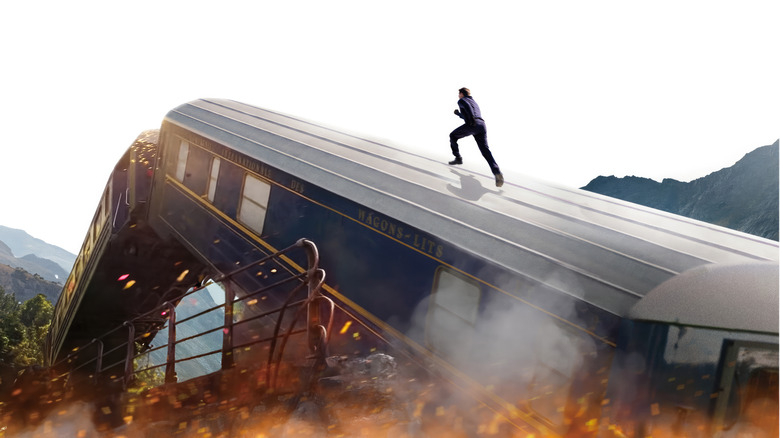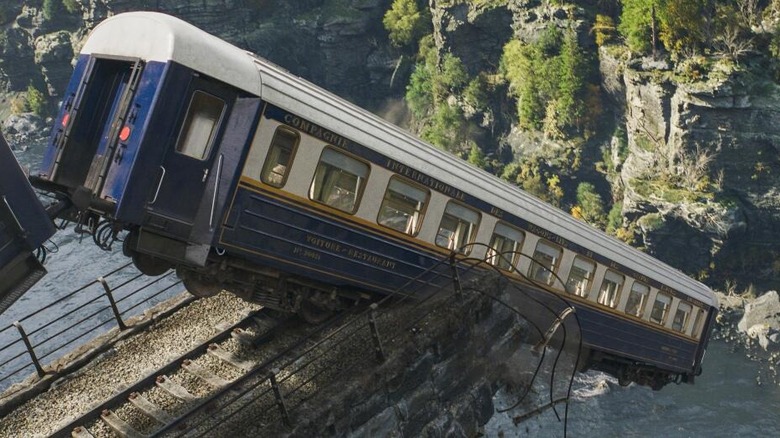Mission: Impossible 7 Risked Losing All Footage For One Of Its Biggest Scenes
The "Mission: Impossible" film series has an established reputation for upping the ante in numerous ways. For starters, there's that title; as Anthony Hopkins' Swanbeck says in "M:I 2," the tasks undertaken by the Impossible Mission Force are not referred to as "Mission: Difficult." Then there's the bar for stunt work that's constantly being raised by the series' star and producer, Tom Cruise, one that keeps getting higher with each successive entry in the franchise.
All that is to say that it's no surprise to hear that the making of the latest installment, "Dead Reckoning Part One" (if that subtitle is still applicable), involved a lot of dangerous elements. What is a little surprising, however, is that not only were stunt people, actors, sets, props and other things in front of the camera put in danger, but the cameras and footage itself were, too.
Usually, stunts and the like are morally justified by the filmmakers knowing a sequence only has to work once in order to look great forever, yet during the shooting of the train crash in "Dead Reckoning," there was the possibility that the footage itself (of which there could only be one take, given that there was just one train to be crashed) wouldn't make it. To paraphrase that age-old philosophical question, if a train crashes during a movie shoot but doesn't end up in the movie, did it even crash at all?
Rolling the dice by wrecking the train
In the "Mission: Impossible" films and "Dead Reckoning" in particular, IMF agent Ethan Hunt (Tom Cruise) accomplishes the impossible through sheer will, essentially crossing his fingers and hoping for the best. That's exactly what director Christopher McQuarrie did when staging the climactic train crash at the end of the film. While many an exciting train crash has occurred in other movies by means ranging from a miniature model to CGI wizardry, McQuarrie and Cruise were determined to up the ante by constructing an actual, full-scale train that they would then crash for real.
In order to capture the event, McQuarrie and cinematographer Fraser Taggart knew they had to use multiple cameras all running at once (again, given that they'd only built one train to crash), and McQuarrie wanted to get as many unique angles on the crash as possible. The plan was to attach six Z Cam running cameras to the train itself and have them capture the entire incident as the train plummeted off a cliff into muddy waters below.
A great idea in theory, but no way to ensure it would work — or if the footage would even be recoverable afterward. As McQuarrie explained during his commentary track found on the film's home release:
"It's kind of terrifying knowing that there is no rehearsal ... There's no way to predict whether or not the cameras on the train would survive. Every camera had exactly one shot of getting it right."
Fortunately, everything turned out splendidly — the crash went off without a hitch and the footage was usable. Now that such a mission has been successful, it's that much more exciting to wonder what McQuarrie and Cruise have in store for "Part Two" (whatever it may be titled). Hopefully nothing too ... impossible.
"Mission: Impossible — Dead Reckoning Part One" is available on Digital, 4K Ultra HD and Blu-Ray now.

